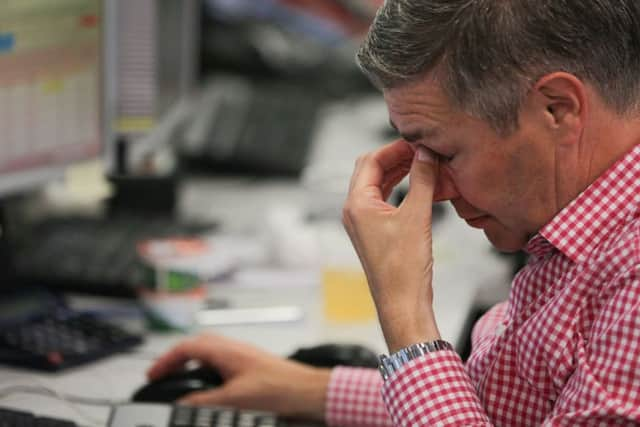Bill Jamieson: Time to tread cautiously amid market tremors


But while that may be the comforting conventional wisdom, it does not mean that there is no cause for worry. There is good cause to worry – several, in fact. The first is a change in investor risk appraisal as a nine-year era of rising asset prices fuelled by ultra-low interest rates and massive central bank monetary stimulus has come to an end.
Blame the sell-off on a surging global economy, with growth set to graze 4 per cent this year. The sell-off began after publication of a solid US jobs report fuelled expectations that the Federal Reserve would need to raise interest rates faster than expected because of the strength of the economy. Last Thursday, the Bank of England seemed to offer support for the view that rates in general are set to rise – though it left them unchanged at 0.5 per cent for now.
Advertisement
Hide AdAdvertisement
Hide AdAll the signals from central banks in the US, the UK and Europe is that inflation, not deflation, is now the uppermost risk and that rates are likely to rise sooner and higher than previously assumed. That makes equities an altogether less attractive option as investors can look to secure better returns from fixed interest holdings. And many shares have been bought on the basis of their yield, with a blind eye turned to the quality of earnings and/or the low level of dividend cover – the amount by which dividend pay-outs are covered by retained earnings.
The second is the severity and suddenness of the market falls. In the US the Dow Jones Industrial Average, even after a recovery on Friday, still ended almost 10 per cent down from its record high on 26 January. In London, the FTSE 100 index ended on Friday down 1.1 per cent at about 7,092, bringing the week’s declines to about 5 per cent.
These dramatic movements beg searching questions about the machinery of stock market investment – in particular the stunning rise in popularity of exchange traded funds. Most of these track an index and have strongly appealed to investors because of their low costs, ease of buying and selling, the diversification offered by an index fund and the ability to sell short or buy on margin. No need for share research and appraisal: just buy the self-selecting index of your choice. There are also ETF derivatives – further adding to the speculative, “market play” appeal for investors. But just as they are easy to buy, they are easy to sell – and retail and professional investors alike can offload at the push of a button.
Last Thursday, the Dow Jones fell by more than 1,000 points for the second time in a week. According to US investment giant Citi, bond funds experienced an inflow of $4 billion in the week to 7 February while equity funds lost $30.6bn to outflows, While that rate of attrition is likely to ease, it does not mean the end of investor apprehensions. Volatility, having been notably subdued in recent years, will now reflect the more brittle investor mood, one vulnerable to unexpected events and worries over geopolitics, not just the daily flow of economic and financial data.
A widespread move towards “de-risking” equity portfolios is now under way. This could see investors opting for a broader spread of assets such as gold and precious metals, a greater weighting towards bond and fixed interest instruments – and holding more cash.
And then there is the risk of central bank policy error. Markets now fret that central banks have fallen behind the curve on inflation and have been too slow to react to signs that had been building for months on an inflation rise. That opens the opposite risk of too sudden or severe a reaction that could see brakes being slammed on and sparking a fresh bout of selling.
These concerns in themselves do not make a fully-fledged bear market inevitable or even likely – only that they have raised the possibility of one. This is still a correction and the economic environment is still positive. We are not seeing any sign of recession.
Investors can adopt a number of defensive strategies for the period ahead. Diversification is one, with greater weightings towards bonds, fixed interest and cash. Tempting though it may be to “buy on the dip”, future investments should be spread over time. And greater attention now needs to be paid to company fundamentals: earnings prospects, balance sheet strength and dividend cover.
Buy your tickets to the annual Scotsman Investment Breakfast Seminar here